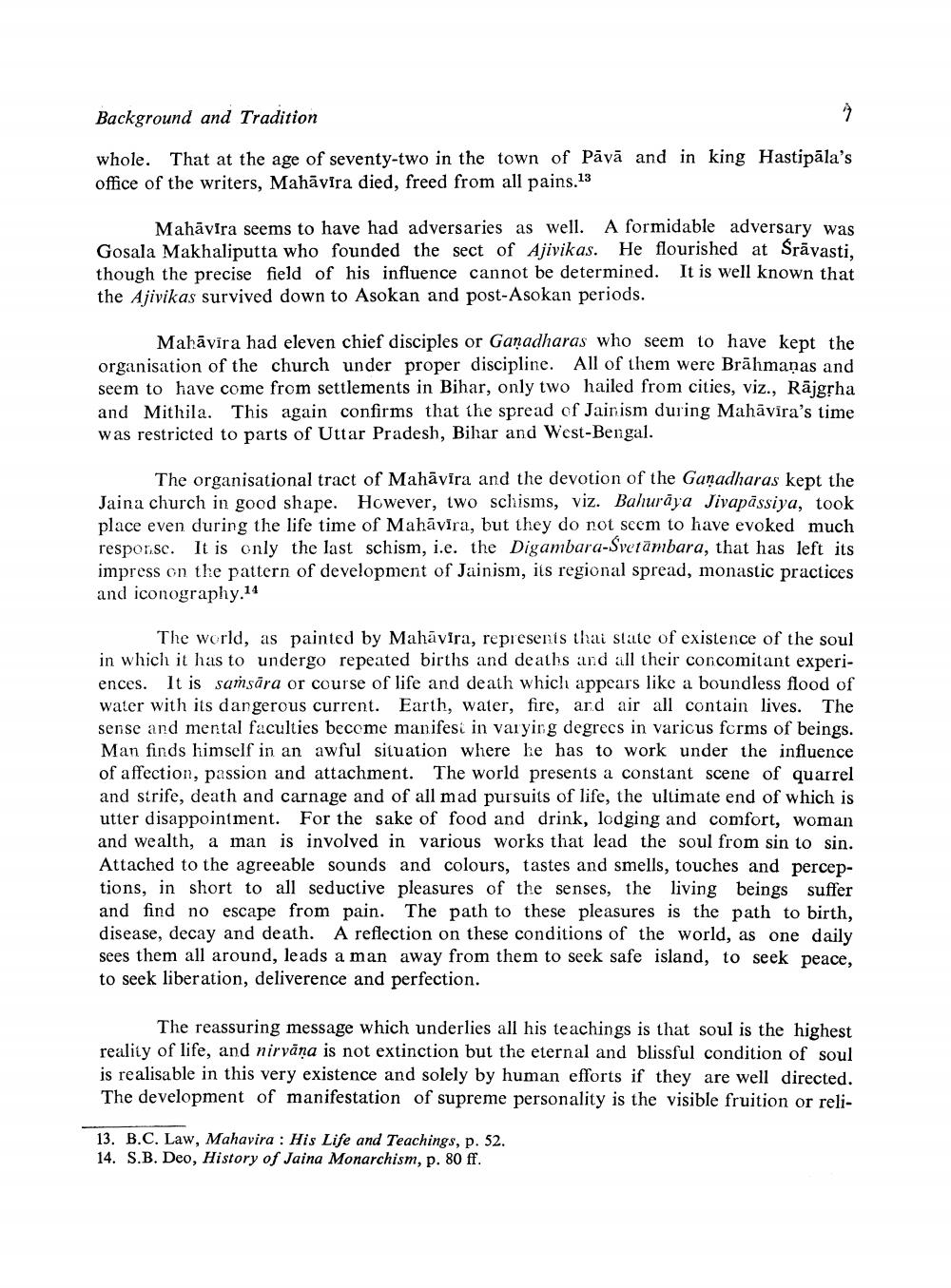________________
Background and Tradition
whole. That at the age of seventy-two in the town of Pāvā and in king Hastipāla's office of the writers, Mahāvira died, freed from all pains.13
Mahāvira seems to have had adversaries as well. A formidable adversary was Gosala Makhaliputta who founded the sect of Ajivikas. He flourished at Srāvasti. though the precise field of his influence cannot be determined. It is well known that the Ajivikas survived down to Asokan and post-Asokan periods.
Mahāvīra had eleven chief disciples or Ganadharas who seem to have kept the organisation of the church under proper discipline. All of them were Brāhmaṇas and seem to have come from settlements in Bihar, only two hailed from cities, viz., Rājgsha and Mithila. This again confirms that the spread of Jainism during Mahāvira's time was restricted to parts of Uttar Pradesh, Bihar and West-Bengal.
The organisational tract of Mahāvira and the devotion of the Ganadharas kept the Jaina church in good shape. However, two schisms, viz. Bahurāya Jivapāssiya, took place even during the life time of Mahāvira, but they do not seem to have evoked much response. It is only the last schism, i.e. the Digambara-Svetambara, that has left its impress on the pattern of development of Jainism, its regional spread, monastic practices and iconography.14
The world, as painted by Mahāvira, represents thai state of existence of the soul in which it has to undergo repeated births and deaths and all their concomitant experiences. It is saṁsāra or course of life and death which appears like a boundless flood of water with its dangerous current. Earth, water, fire, ard air all contain lives. The sense and mental faculties become manifest in varying degrees in varicus forms of beings. Man finds himself in an awful situation where he has to work under the influence of affection, passion and attachment. The world presents a constant scene of quarrel and strife, death and carnage and of all mad pursuits of life, the ultimate end of which is utter disappointment. For the sake of food and drink, lodging and comfort, woman and wealth, a man is involved in various works that lead the soul from sin to sin. Attached to the agreeable sounds and colours, tastes and smells, touches and perceptions, in short to all seductive pleasures of the senses, the living beings suffer and find no escape from pain. The path to these pleasures is the path to birth, disease, decay and death. A reflection on these conditions of the world, as one daily sees them all around, leads a man away from them to seek safe island, to seek peace, to seek liberation, deliverence and perfection.
The reassuring message which underlies all his teachings is that soul is the highest reality of life, and nirvana is not extinction but the eternal and blissful condition of soul is realisable in this very existence and solely by human efforts if they are well directed. The development of manifestation of supreme personality is the visible fruition or reli
13. B.C. Law, Mahavira : His Life and Teachings, p. 52. 14. S.B. Deo, History of Jaina Monarchism, p. 80 ff.




